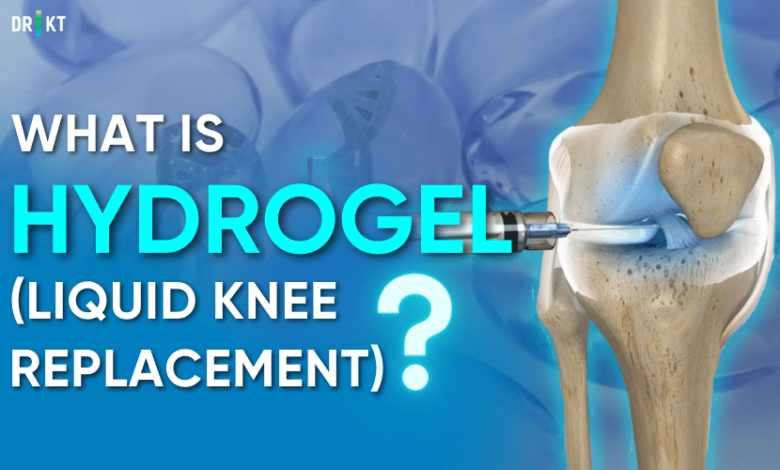
Individuals with osteoarthritis typically experience symptoms such as pain, swelling, limited mobility, and joint deformities. These symptoms can significantly impact daily life, making activities like climbing stairs, walking long distances, or squatting challenging and painful.
Osteoarthritis is a joint disease caused by the gradual wear and tear of the cartilage tissue over time. Cartilage is a smooth and elastic tissue that cushions the ends of bones in joints. This cartilage enables smooth joint movement and prevents bones from rubbing against each other. When the cartilage deteriorates, bones can come into contact, leading to pain and inflammation.
Osteoarthritis is the thinning and wear and tear of cartilaginous tissue, causing the bones to rub against each other and causing pain. Risk factors for knee arthritis include genetic predisposition, obesity, prior knee injuries, and repetitive stress or overuse of the joint. While more common in older adults, osteoarthritis can also affect younger individuals.
Although there is no definitive cure for knee arthritis, various treatments aim to alleviate pain, improve mobility, and enhance quality of life. These include medications, physical therapy, knee braces, intra-articular injections, and, in severe cases, surgical interventions (when necessary).
One emerging treatment option is intra-articular hydrogel injections, scientifically known as polyacrylamide hydrogel (PAAG). This method, sometimes referred to as “liquid knee replacement,” involves injecting a gel-like substance into the joint to provide cushioning and reduce friction between bones. While promising, its long-term efficacy and safety are still being researched.
Read the rest of our article to find out how the hydrogel injection is applied and whether it really has an effect.
Table of Contents:
- Factors Affecting Method Selection in Knee Osteoarthritis Treatment
- What is Hydrogel? What are Hydrogels Used for?
- Hydrogel Treatment for Knee Osteoarthritis
- How is Hydrogel Injection Applied?
- After Hydrogel Injection
- Are There Any Hydrogel Injection Side Effects?
- Who is not Suitable for Hydrogel Injection?
Factors Affecting Method Selection in Knee Osteoarthritis Treatment
Choosing the most appropriate treatment for knee osteoarthritis depends on several key factors, including the stage of the disease, the patient’s age, general health, pain severity, lifestyle, and personal preferences. These factors are carefully considered by the doctor and the patient to develop an individualized treatment plan.
- Stage of the Disease: Knee osteoarthritis is classified into four stages. In the early stages, symptoms may include mild pain and slight movement limitations. At this stage, treatments such as medication, physical therapy, or lifestyle modifications are often effective. In advanced stages, where significant cartilage loss and severe pain occur, surgical interventions like joint replacement may be necessary.
- Patient Age and General Health Status: A patient’s age and overall health significantly influence treatment choices. For instance, older patients or those with existing health issues (e.g., heart disease or diabetes) may not be ideal candidates for surgery. In such cases, non-surgical methods like physical therapy, pain management, or assistive devices are preferred.
- Pain Level: The severity of pain is another crucial consideration. Mild pain can often be managed with over-the-counter pain relievers or anti-inflammatory medications. For more severe pain, intra-articular injections (e.g., corticosteroids or hyaluronic acid) or surgical options may be considered.
- Lifestyle: A patient’s activity level, occupation, and hobbies play a role in determining treatment goals. For active individuals, the focus is often on restoring mobility and optimizing joint function. For those with a sedentary lifestyle, pain management and preserving basic mobility might be prioritized.
- Patient’s Preferences and Expectations: The patient’s preferences and expectations are vital in the decision-making process. For example, some patients may wish to avoid surgery and opt for conservative approaches, while others may choose surgery for quicker and more definitive relief. Discussions with the healthcare provider can help align treatment plans with realistic outcomes.
All these factors must be assessed through open discussions between the patient and their doctor. By considering each individual’s unique needs and circumstances, the most suitable osteoarthritis treatment plan can be determined.
What is Hydrogel? What are Hydrogels Used for?
Hydrogels, which are used as a new method in the treatment of knee joint arthritis, were first introduced in 1960. Their first use was in the production of contact lenses. Hydrogels are smart biomaterials that can absorb large amounts of water and thus exhibit swelling properties.
The formation of hydrogel involves the crosslinking of polymer chains to create a water-absorbent, gel-like structure. Because of their high water content, hydrogels closely resemble living tissue, making them highly biocompatible and less likely to be perceived as foreign bodies when injected into the body.
Hydrogels’ compatibility with biological systems has made them indispensable in medicine, but their applications extend beyond this field to include pharmacy, cosmetics, agriculture, chemistry, and food technology. Their versatility stems from their ability to adapt to various environments, absorb water, and provide structural support.
While hydrogels have many applications, the most important medical hydrogel applications are listed below:
- Orthopedic applications: Used in treatments like joint cushioning, cartilage repair, and osteoarthritis management.
- Urinary Incontinence: They act as bulking agents to support the urethra in conditions such as stress incontinence.
- Contact lenses: Silicone hydrogels are widely used in contact lenses due to their flexibility and high water content, improving comfort.
- Drug delivery systems: Hydrogel drug delivery facilitates controlled and sustained release of medication to target specific areas in the body.
- Hydrogels for cancer treatment: Designed to locally release chemotherapy drugs, reducing side effects and enhancing treatment efficacy.
- Spinal cord regeneration: In spinal cord injury hydrogel acts as a supportive scaffold, promoting cell growth and aiding tissue repair in damaged areas.
- Wound care and healing: Hydrogel wound dressing creates a moist environment on wounds, accelerating healing and preventing infections.
- Derma fillers: In facial aesthetics, hydrogels are used as dermal fillers to restore volume and reduce wrinkles.
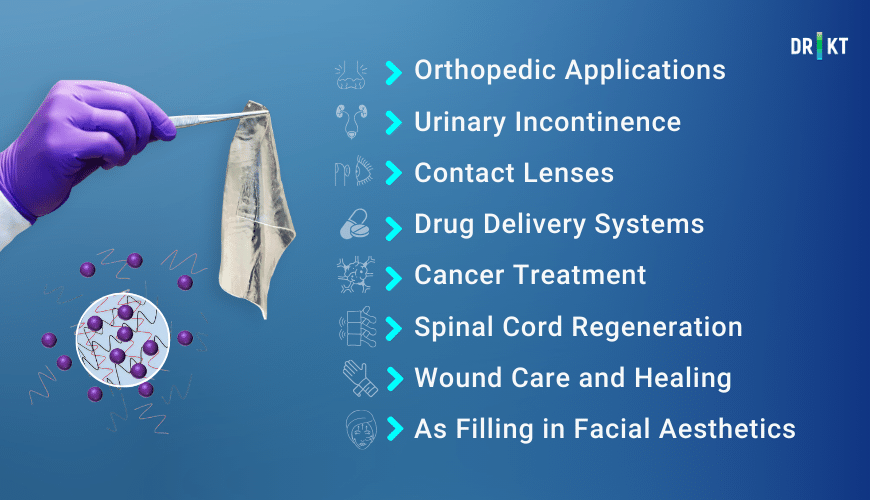
Hydrogels are also finding increasing application in the treatment of knee arthritis. Their ability to act as a cushion and reduce friction between bones has led to their use in intra-articular injections worldwide. However, questions remain about their long-term effectiveness and duration of action in treating knee arthritis: How long does hydrogel last? These issues will be explored in the following sections.
Hydrogel Treatment for Knee Osteoarthritis
The use of polyacrylamide (PAAG) hydrogel knee injections represents a novel approach to the treatment of knee osteoarthritis.
Since the hydrogel is compatible with body biology, it can be injected into the knee joint as a sterile gel. Hydrogel joint injections consist of 97.5% sterile water and 2.5% polyacrylamide. The polyacrylamide component prevents biodegradation, ensuring that the hydrogel remains effective over time without being absorbed or broken down by the body.
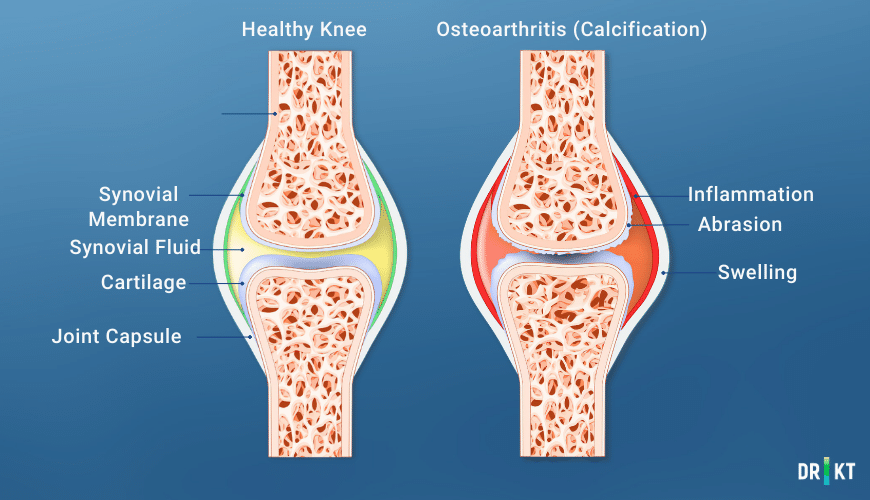
Injectable hydrogel is administered into the knee joint cavity and integrates with the synovial tissue. Thus, the synovial membrane thickens. And what does that mean? The knee joint is lined with a special thin membrane (synovium) made of small synovial cells. The synovial membrane is a thin layer of tissue that lines the joint and produces synovial fluid, the natural lubricant that enables smooth joint movement. In osteoarthritis, this membrane often becomes inflamed, a condition known as synovitis, which contributes to pain, stiffness, and reduced mobility.
Hydrogel injections for knees can help to combat these issues by forming a protective, stable layer over the surface of the synovial membrane. This layer reduces inflammation and enhances the production of synovial fluid, creating a more favorable environment for joint movement.
Within a few weeks of injection, the hydrogel adheres to the synovial membrane and integrates into the surrounding joint capsule, acting as a hydrogel scaffold. In other words, it forms a cushion within the joint, supporting load-bearing functions and strengthening the joint capsule. Additionally, hydrogel properties improve the elasticity of the joint, potentially enhancing mobility and reducing discomfort.
While hydrogel treatment offers several benefits, including reduced inflammation and improved joint function, it is important to note that this method is relatively new. Clinical studies are ongoing to evaluate its long-term safety, efficacy, and durability. However, early results are promising, making hydrogel injections an exciting option for individuals with knee osteoarthritis.
How is Hydrogel Injection Applied?
Hydrogel injection is a minimally invasive procedure performed in a clinical setting under sterile conditions. The process involves injecting the hydrogel directly into the knee joint to provide cushioning and improve joint function. Below are the steps typically followed during the procedure:
Preparation: The patient is given a single dose of antibiotics before the procedure to minimize the risk of infection. A small amount of local anesthetic is administered to numb the area and reduce any discomfort during the injection.
Ultrasound Guidance: An ultrasound scan may be performed prior to the injection to identify the most appropriate injection site and evaluate the level of fluid in the knee joint.
Drainage of Excess Fluid: If there is significant fluid buildup in the knee joint (a condition known as effusion), the excess fluid is drained (aspirated) using a syringe. This step reduces joint pressure and allows the hydrogel to integrate more effectively with the joint.
Injection of Hydrogel: A sterile needle is used to inject the hydrogel directly into the synovial cavity. The hydrogel is delivered in a controlled manner to ensure even distribution and optimal cushioning effects. The procedure is typically quick, taking only a few minutes to complete.
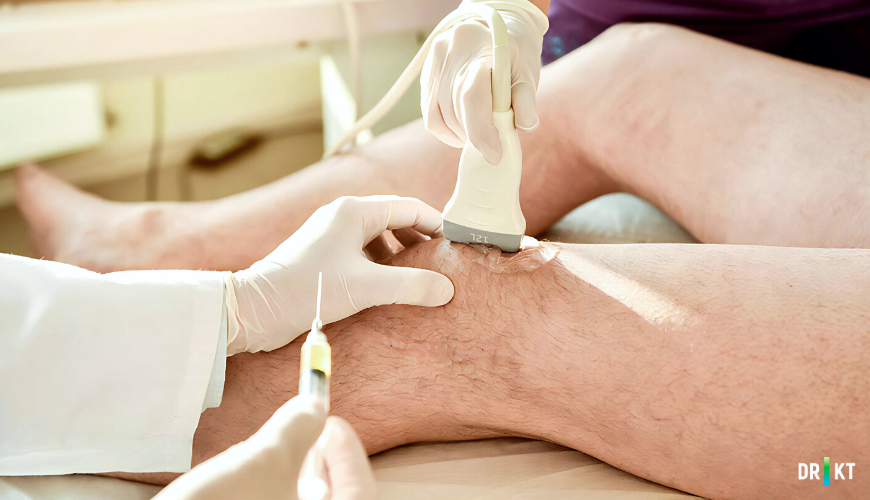
After Hydrogel Injection
After the hydrogel injection, the patient should be monitored for 10-15 minutes to ensure there are no immediate side effects, such as allergic reactions or excessive swelling. After the local anesthetic wears off, mild joint pain and swelling may occur. In such cases, over-the-counter painkillers like acetaminophen or NSAIDs (e.g., ibuprofen) may be recommended to manage discomfort. Applying an ice pack to the knee for 15–20 minutes at a time can also help reduce swelling.
Patients are advised to rest the knee for at least 2–3 days following the injection. Strenuous activities, such as running, long walks, or heavy lifting, should be avoided to minimize the risk of inflammation or flare-ups. Gradual resumption of normal activities is encouraged, but any activity that causes significant pain should be avoided.
The benefit of the injection usually becomes noticeable around 4 weeks after administration, with maximum effectiveness often achieved within 12 weeks. Since the hydrogel is not broken down by the body, it may provide prolonged pain relief and improved joint function compared to other treatments.
A holistic approach is adopted in the treatment of knee arthritis. Some other interventions, such as tailored exercise programs, physical therapy, bracing, and weight management treatment methods, are used together.
Patients should follow their orthopedic doctor’s and physiotherapist’s advice for ongoing care and schedule follow-up appointments to monitor progress. This integrated approach helps optimize long-term results and improves overall quality of life.
Are There Any Hydrogel Injection Side Effects?
Studies indicate that polyacrylamide (PAAG) hydrogel for knees is generally well received by patients and considered safe. However, as with any medical procedure, hydrogel injections can be associated with certain side effects. While most are mild and temporary, some may require medical attention. Possible hydrogel injection side effects are as follows:
- Knee Pain and Swelling: Mild to moderate pain and swelling in the knee are common after hydrogel injections. These symptoms usually resolve within a few days to weeks and can be managed with over-the-counter pain relievers or ice packs.
- Limitation of Movement: Some patients may experience stiffness or a temporary reduction in knee range of motion. This is often due to localized inflammation and typically subsides with time.
- Sensory Changes: Tingling, numbness, or sensations of coldness or warmth in the leg may occur after the procedure.
- Risk of Infection: Although rare, there is a risk of infection after hydrogel injection. Symptoms of infection may include redness, warmth, increasing pain, or fever. Sterile techniques and prophylactic antibiotics are used to minimize this risk.
- Allergic Reactions: In rare cases, some patients may experience allergic reactions to the injected material, which could present as itching, swelling, or a rash.
Most side effects are short-lived and manageable. However, if you experience any of the following, contact a healthcare professional immediately:
- Persistent or worsening pain or swelling
- Symptoms of infection, such as fever or redness
- Severe allergic reactions, such as difficulty breathing or swelling of the face
By following post-procedure care instructions and staying in communication with your healthcare provider, the risks of side effects can be minimized, and the benefits of the hydrogel injection are maximized.
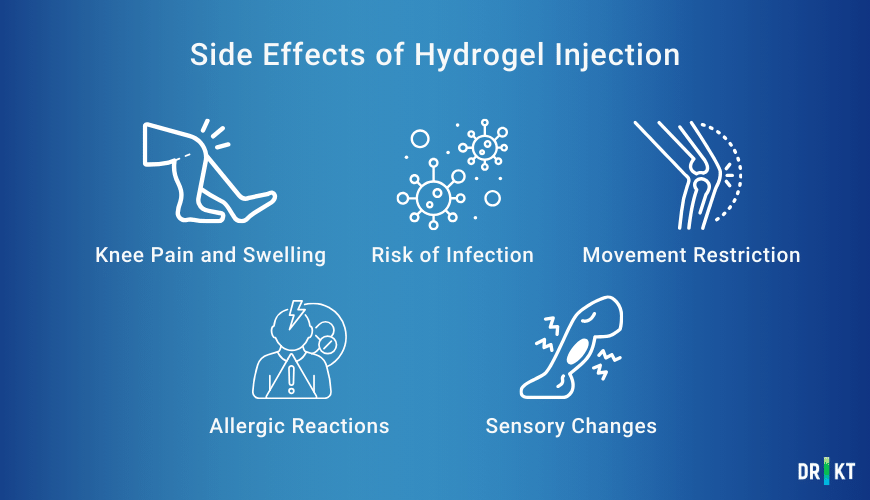
Who is not Suitable for Hydrogel Injection?
Although hydrogel injection is a treatment that can benefit many patients, it may not be suitable for everyone. People with the following conditions are advised not to undergo hydrogel injection treatment:
- Infections: People with an active infection in the knee joint or on the skin near the injection site should avoid hydrogel injections.
- Recent Surgeries: Patients who have undergone knee arthroscopy or other surgical procedures on the knee within the last 6 months may not be suitable, as their knee may still be healing.
- Individuals with an Artificial Knee Joint: People who have had total knee replacement surgery or have any kind of implant in the knee joint are not ideal candidates.
- Recent Injections: Patients who have recently received other intra-articular injections, such as hyaluronic acid or corticosteroids, should wait a sufficient period (usually 3–6 months) before considering hydrogel treatment.
- Certain Health Conditions: Individuals with systemic or chronic conditions that affect joints, such as hemophilia and autoimmune diseases (e.g., lupus or rheumatoid arthritis), may not be suitable candidates.
- Pregnancy or Allergies: Pregnant individuals or those with known allergies to any component of the hydrogel should avoid this treatment until it is deemed safe by a healthcare provider.
People experiencing these and similar conditions should consult their doctor for appropriate treatment options and alternative therapies.
Conclusion: Is Hydrogel Therapy for Knee Osteoarthritis Really Effective?
With ongoing advancements in the treatment of knee osteoarthritis, there is growing interest in non-surgical methods, such as hydrogel injections. These methods offer patients and physicians hope for effective pain relief and improved joint function while delaying or avoiding surgical intervention. Among these, hydrogel therapy has gained attention as a minimally invasive option.
Current studies and clinical experience suggest that hydrogel injections may reduce pain and enhance joint mobility for certain patients with knee osteoarthritis. Preliminary data indicate that the effects of this treatment can last up to three years, making it a promising option for short- to medium-term management. However, longer-term studies (spanning five and ten years) are still underway to evaluate its sustained effectiveness and safety.
While hydrogel therapy shows promise, it is important to note that its efficacy can vary from patient to patient. In some cases, the treatment may postpone the need for surgical intervention, but it may not eliminate the necessity of surgery in the long term. Additionally, more extensive research is needed to understand better its long-term effects, potential side effects, and the specific patient populations most likely to benefit.
Ultimately, there is no “one-size-fits-all” solution for treating osteoarthritis of the knee. The best treatment approach depends on the patient’s individual condition, severity of symptoms, and overall health. Hydrogel therapy can be an effective option for managing symptoms in some patients, but it should be considered as part of a comprehensive treatment plan.
It is essential to consult your healthcare provider to explore the most suitable options for your specific needs. A thorough evaluation by your doctor will help determine whether hydrogel therapy or another treatment is the most appropriate course of action for managing your knee osteoarthritis. Contact us for information about the most appropriate and effective treatment for you.
Frequently Asked Questions
Has hydrogel therapy been approved for use?
Yes, polyacrylamide hydrogel (PAAG) is approved in some regions, including Europe, where it received CE certification in 2021 for knee osteoarthritis treatment. In the United States, it is still under FDA review for efficacy and safety. Consult your orthopedic doctor to determine if hydrogel therapy is right for you.
What is the difference between hyaluronic acid and hydrogel applied intra-articularly in arthritis?
Hyaluronic acid and hydrogel are two distinct substances used to treat knee arthritis, each with unique properties and applications:
- Polyacrylamide Hydrogel: A gel that holds water molecules and forms a cushion inside the joint. It integrates with the joint lining, is long-lasting, and typically requires only one injection.
- Hyaluronic Acid: A naturally occurring substance that lubricates joints by mimicking joint fluid. It often requires repeated injections as it is absorbed by the body over time.
Your doctor will recommend the best option based on your condition, needs, and treatment goals.
Can hydrogel be used for arthritis of other joints, such as the hip joint?
While hydrogel has been used experimentally in other joints, such as the hip and shoulder, it is currently only approved for use in the knee joint. There is limited evidence regarding its efficacy, safety, and risks for other joints.
Should I inform my doctor/dentist about my hydrogel treatment?
Yes, you should inform your doctor or dentist about your hydrogel treatment. During surgical or dental procedures, infections can potentially spread to the knee joint, including the hydrogel, and may be resistant to antibiotics. This could lead to severe joint infections requiring surgical intervention. Always keep your healthcare providers informed about your treatments.
Can hydrogel be used in the treatment of inflammatory rheumatic joint diseases?
Hydrogel is designed for degenerative joint diseases like osteoarthritis, not inflammatory rheumatic diseases such as rheumatoid arthritis, which result from systemic inflammation and immune system dysfunction. There is insufficient clinical data on its use for these conditions. Consult your doctor to explore appropriate treatments for rheumatic joint diseases.
How long do hydrogel injections last?
Current evidence suggests that the benefits of hydrogel knee injections can last up to three years. However, long-term studies, including five- and ten-year follow-ups, are still underway to better understand its durability. Ongoing research will provide more definitive insights into its long-term effectiveness.


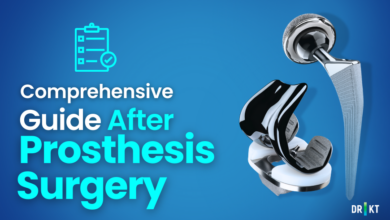

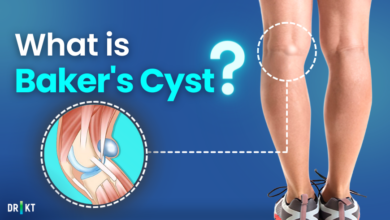
In the case of bone to bone at the end of the joint, can hydrogel be used as a material for total knee replacement or total ankle replacement,
Thank you for your comment and your question. Hydrogels can be used in the treatment of knee osteoarthritis; however, this decision depends on the patient’s specific needs and the condition of their knee. Hydrogels are more commonly used for less severe cases of osteoarthritis (not bone-on-bone situations), where they can provide cushioning and support to the damaged cartilage, rather than completely replacing the joint.
To date, hydrogels are primarily used for osteoarthritis of the knee and not for other joints like the ankle or hip.
If you have more specific questions or need detailed information, please feel free to contact us via our free WhatsApp service at +90 505 999 17 77
Hello, I am trying to find a Dr in US to do this for me? Are there trials or other places available for this injection?
Hello, first of all, get well soon. We would also like to assist you. For detailed information and consultation, you can contact us at 0505 999 1 777. Stay healthy.
Is there an age limit to Chondrofiller Gel for cartilage regeneration
Hello, first of all, I wish you a speedy recovery.There isn’t a specific age limit for using ChondroFiller Gel for cartilage regeneration, but its effectiveness may vary depending on the patient’s overall health, the severity of the cartilage damage, and the age of the patient. If you get your tests done and share them with us via our WhatsApp line at +90 505 999 1 777, we can review them and provide you with more information. We wish you healthy days ahead.
Hi,
Who does this Hydrogel Injections for the Knee in Southern California?
Hello, first of all, we wish you a speedy recovery. We are providing services at Bursa Private Aritmi Osmangazi Hospital in Turkey. We would be happy to assist you.
For a detailed consultation and more information about knee hydrogel treatment, please feel free to contact us anytime at +90 505 999 1 777.
Wishing you good health!
Hi,
Hydrogel Injections for the Knee in Southern California? Locations
Hello, first of all, we wish you a speedy recovery. We are providing services at Bursa Private Aritmi Osmangazi Hospital in Turkey. We would be happy to assist you.
For a detailed consultation and more information about knee hydrogel treatment, please feel free to contact us anytime at +90 505 999 1 777
Wishing you good health!
Dear Sir,
I am suffering from osteoporosis due to AVN on my both hip joints. I got Total Hip Joint Replacement Surgery done on my right hip Joint, which was in AVN stage 3. My left hip joint is in AVN Stage 2. I am on osteoporosis treatment. Does the hydrogel injection going help me avoid hi joint replacement?
Hello, first of all, we wish you a speedy recovery. We would be happy to assist you. In order to provide detailed information about your condition, we need to examine you and review your test results. For a more in-depth consultation and for us to assist you better, please feel free to contact us at +90 505 999 1 777. Wishing you good health.
I live in New Orleans, LA and I am interested in this treatment protocol. I have osteoarthritis in both knees with varus. I have been taking HA injections for about 6 years now. From time to time, my right knee requires aspiration but has not required aspriration in over a year. Is this treatment approved in the United States? Looking forward to your response.
Thank you.
Hello, first of all, we wish you a speedy recovery. Hyaluronic acid (HA) injections used in knee osteoarthritis are FDA-approved in the United States and have been safely administered for a long time. Additionally, more innovative approaches, such as hydrogel-based treatments, have been developing in recent years; these substances remain in the joint longer and provide both lubricating and protective effects. However, hydrogel treatments are currently in clinical research stages, and some products have not yet received FDA approval. The suitability of these new treatments for your condition depends on your current clinical status and treatment history.For a detailed consultation and more information about knee hydrogel treatment, please feel free to contact us anytime at +90 505 999 1 777.
Hi hello. I and interested in the Hydrogel injection , but I live here in North Hollyw o od California , thank you very much.
Hello, first of all, we would like to wish you a speedy recovery. We would be happy to assist you with the hydrogel injection. The hydrogel substance remains in the joint for a longer period of time and provides both lubricating and protective effects. If you would like to have a detailed consultation about hydrogel treatment for the knee and learn more about the most suitable treatment option for you, please feel free to contact us anytime at +90 505 999 1 777.
Greetings, Are you aware of trials in the US?
Please reply specifically to this question.
Many people on this site have asked about access in the US. Thank you, DD
Hydrogel is an innovative treatment method that is injected into the joint and remains there for a long time, providing both lubricating and protective effects. It helps reduce pain and improve mobility in joint disorders such as knee osteoarthritis. Clinical research is ongoing, and some products are still undergoing approval processes. For detailed information and consultation about knee hydrogel treatment, please feel free to contact us anytime at +90 505 999 1 777. Wishing you good health!
Is there a doctor in Sydney, Astralia does these injections?who does these injections ?
We provide services in Turkey. Our treatments are available at Bursa Private Aritmi Osmangazi Hospital and Istanbul Esha Surgical Medical Center. You can contact us anytime for detailed information at +90 505 999 1 777. Wishing you good health.
Hello, I’m about to go through a Stem Cell Injection Procedure into my left hip for pain due to a mild form of arthritis. My question is, would I benefit more from Hydrogel Injections verses Stem Cell or Hyaluronic Acid Injections? All of the above I’m fairly familiar with.
Hello, first of all, we wish you a speedy recovery. Stem cell therapy is a treatment method aimed at regenerating cartilage tissue and can provide long-term pain relief in some patients. However, results may vary from person to person. Hyaluronic acid injections help relieve pain and improve mobility by supplementing the joint fluid. They are easy to administer, but their effects usually last for 3–6 months and they do not promote cartilage regeneration. Hydrogel injections provide cushioning and mechanical support within the joint, helping to reduce pain. Their effects can last up to 6–12 months. The procedure is simple, but it does not directly contribute to cartilage repair. For mild arthritis, hyaluronic acid or hydrogel injections can be effective options for pain management, while stem cell therapy offers regenerative potential. We would be happy to assist you in determining the most suitable treatment option for your condition. You can reach us at +90 505 999 1 777 at any time. Stay healthy.